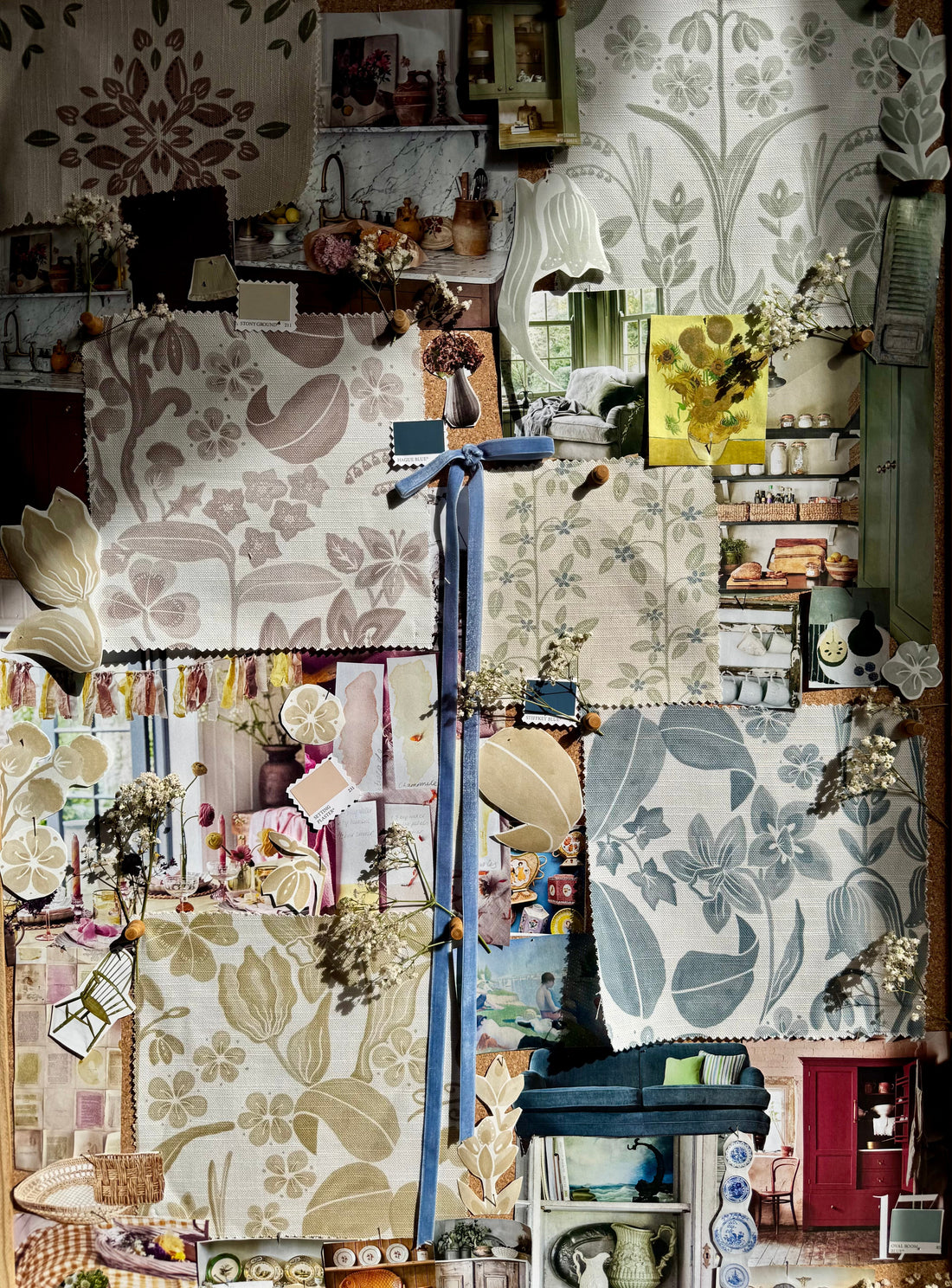
How to Create a Successful Moodboard for Redecorating Your Home
Share
Redecorating your home is an exciting journey—one filled with creativity, personal expression, and the joy of transforming your space into a true reflection of your style. One of the most effective tools in the interior design process is the moodboard. Whether you’re revamping a single room or planning a whole-house refresh, a well-curated moodboard will guide your vision and ensure every element harmonises beautifully.
Here’s how to create a successful moodboard that captures everything from fabrics and natural fibres to floral designs, textures, and timeless cottage-inspired interiors.
1. Start with a Clear Vision
Before you begin gathering samples or images, think about the overall mood and function of your space. Are you drawn to seasonal interiors—cool and airy in summer, warm and layered in winter? Do you love the softness of cottage-inspired interiors, or are you looking for something more structured yet still full of charm?
Define a few keywords that describe your vision (e.g., relaxed, floral, cosy, elegant) and keep them in mind throughout the process.
2. Gather Fabric Samples
Fabrics are the foundation of any moodboard. Visit fabric shops or browse online for fabric by the metre that aligns with your theme. Look for a mix of natural fibres like linen, cotton, and wool, which not only look beautiful but also offer durability and breathability—ideal for curtains, cushions, upholstery, and headboards.
Use a mix of textures: pair soft florals with tactile weaves or striped ticking for a timeless, layered look. Don’t forget to label each swatch for future reference!
3. Mix Paint Colours Thoughtfully
Include paint samples in your moodboard to tie your palette together. Choose tones that complement your fabrics and images. Neutrals often work well with floral designs and help anchor more vibrant hues. Try classic whites, sage greens, dusty pinks, or heritage blues to capture that inviting, timeless design.
Use tester pots to paint small card swatches—these are more portable and easier to compare than colour charts.
4. Add Magazine Cuttings & Inspirational Images
Flip through interior design magazines or scroll through your favourite blogs and Pinterest boards. Tear out or print images that resonate with your vision. Focus on rooms that showcase seasonal interiors, headboards, blinds, and upholstery solutions that align with your style. A cottage-style kitchen, a romantic floral bedroom, or a soft linen sofa can all help define your aesthetic.
5. Layer in Textures and Found Objects
Textures add depth to your moodboard. Consider including samples of wood, rattan, or metal finishes. A piece of ribbon, dried flowers, or a scrap of wallpaper can be powerful visual cues. These tactile elements reflect how your home will feel, not just how it will look.
6. Assemble and Refine
Once you’ve collected your pieces, begin arranging them on a board (physical or digital). Group items by room or purpose—cushions, curtains, headboards—and adjust the layout until everything flows. The goal is cohesion; each piece should contribute to a unified vision.
Don’t be afraid to edit. Sometimes less is more, especially when aiming for that calm, curated effect so beloved in cottage-inspired and timeless interiors.
7. Take Notes and Stay Organised
Keep notes on where each fabric or paint sample came from, especially if you’re ordering fabric by the metre for curtains, blinds, or other large projects. Store everything in a folder or digital file to make ordering and sourcing easier down the line.
Ready to Start Your Moodboard?
At Ashleigh Mercia Interiors, we believe that great design starts with great planning. A thoughtfully created moodboard helps turn your inspiration into reality—whether you’re dreaming of delicate florals, rustic natural fibres, or a beautifully layered mix of fabrics and finishes.
Explore our range of fabrics by the metre, and let’s start shaping your dream space, one swatch at a time.
